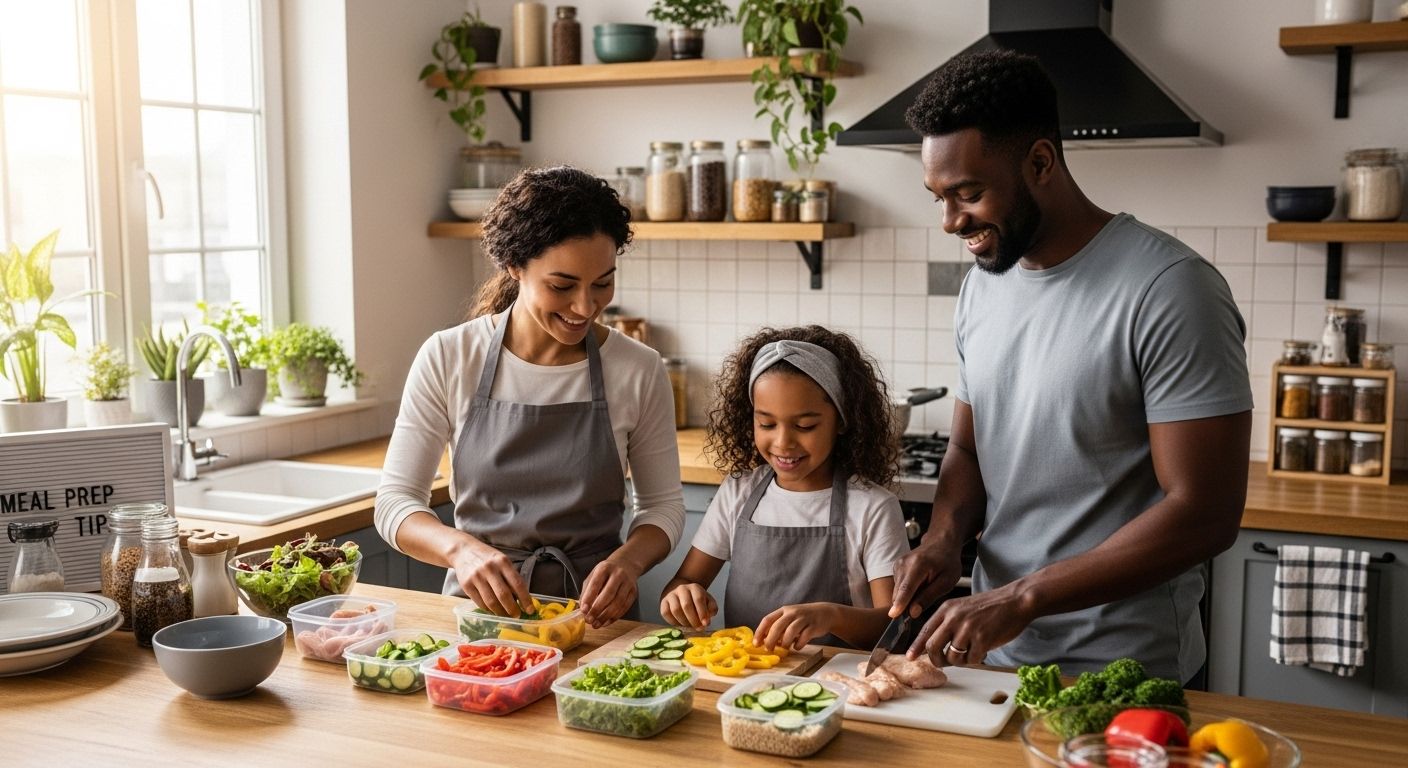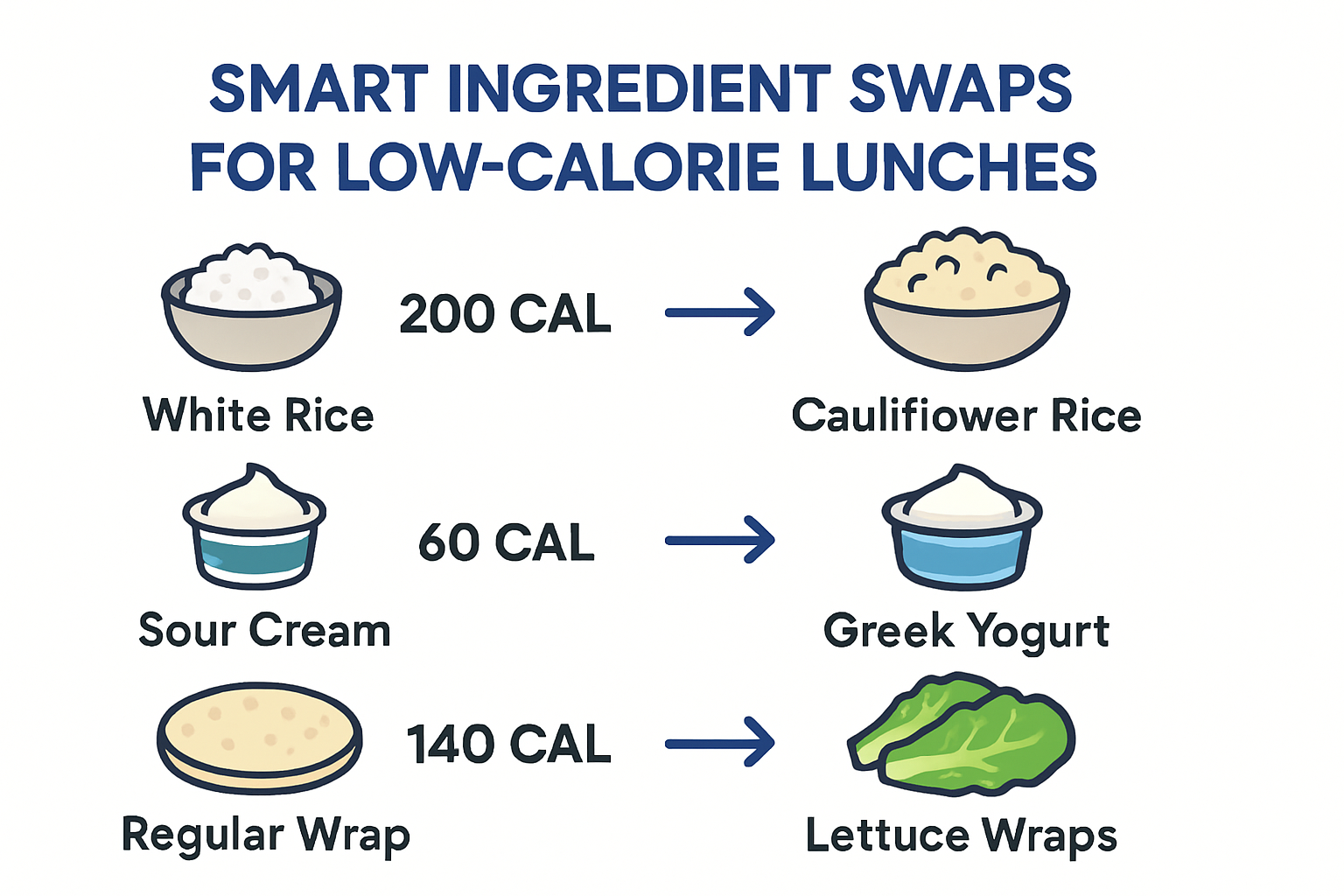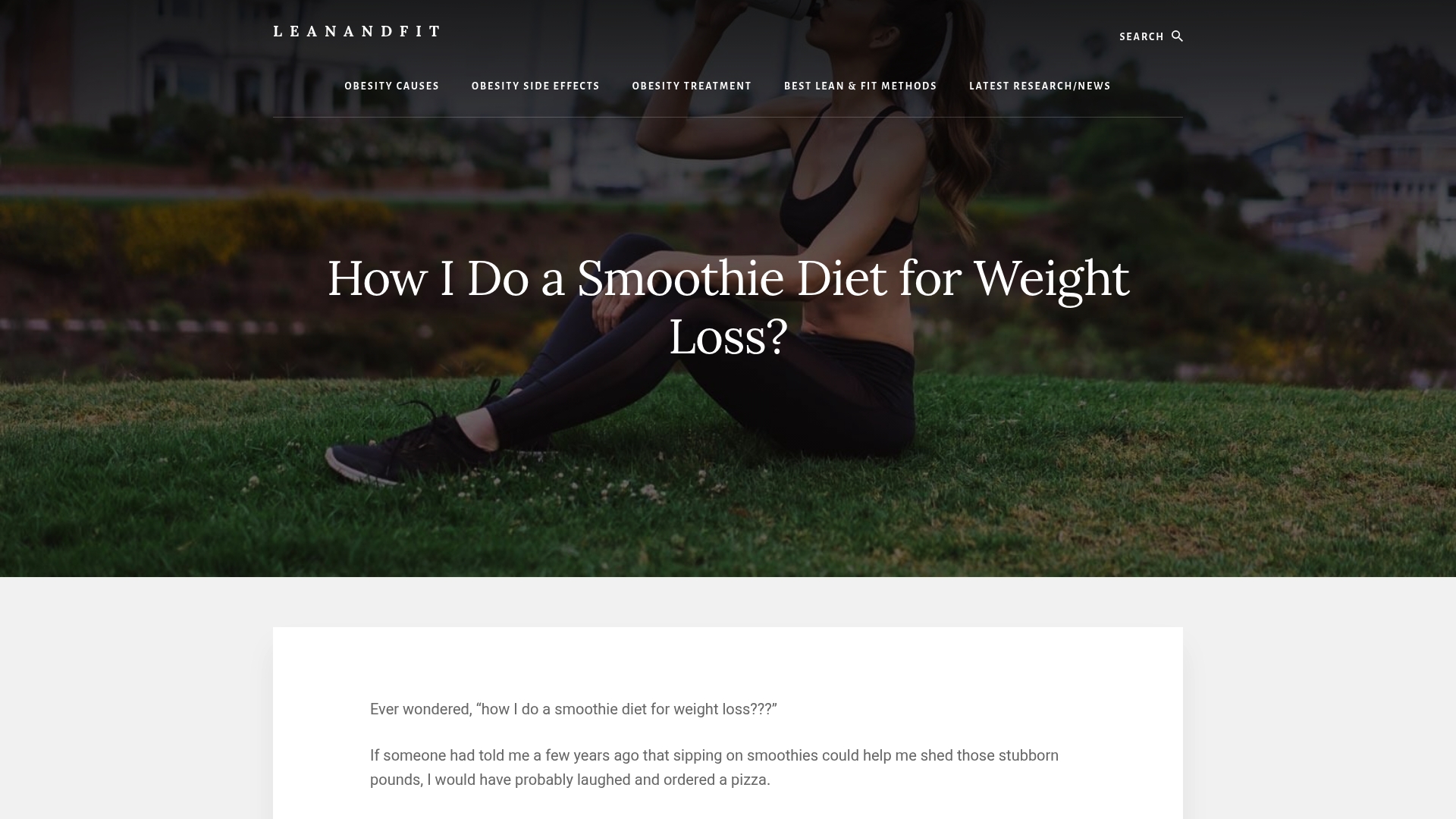Healthy eating at lunchtime can feel like a straight-up struggle when cravings hit and convenience wins.
Most people assume that low calorie lunches are bland or leave you hungry.
The shocker is that a smart lunch can actually keep you full and energized with options like Mediterranean chickpea salad or turkey wraps that come in at under 400 calories per serving.
These meals do more than trim your waistline. They can completely reset how your body manages energy the rest of the day.
Table of Contents
- Why Choose Low Calorie Lunch Ideas
- Quick Low Calorie Lunch Recipes
- Meal Prep Tips For Busy Schedules
- Smart Swaps For Lower Calorie Meals
Quick Summary
| Takeaway | Explanation |
|---|---|
| Choose nutrient-dense foods | Opt for foods that are high in nutrients but low in calories to support weight management and satiety. |
| Plan meals in advance | Strategic meal planning helps streamline lunch preparation, saving time and ensuring nutritional balance. |
| Incorporate smart ingredient swaps | Replace high-calorie ingredients with healthier alternatives to reduce calorie intake without sacrificing flavor. |
| Prioritize preparation techniques | Use efficient cooking methods like batch cooking and smart kitchen tools to simplify meal prep and save time. |
| Focus on long-term health benefits | Consistently choosing low calorie lunches can help prevent chronic diseases and support overall wellness. |
Why Choose Low Calorie Lunch Ideas?
Creating a healthy lifestyle starts with strategic food choices, and low calorie lunch ideas represent a powerful approach to nutritional wellness.
These carefully crafted meal options offer more than just weight management they provide a comprehensive strategy for improving overall health and well-being.
Metabolic Health and Weight Management:
Choosing low calorie lunch ideas is not just about reducing numbers on a scale.
Research published by the National Institutes of Health reveals that low-calorie eating patterns can significantly impact metabolic function.
By consuming nutrient-dense meals with fewer calories, individuals can effectively regulate metabolism, support sustainable weight control, and improve critical cardiometabolic markers.
The science behind low calorie lunches is compelling.
When you consume meals that are carefully portioned and nutritionally balanced, your body experiences several key benefits.
These include improved insulin sensitivity, reduced inflammation, and more consistent energy levels throughout the day.
Unlike crash diets or extreme restrictions, low calorie lunch ideas focus on quality nutrition that supports long-term health goals.
Nutritional Density and Satiety:
Contrary to popular belief, low calorie does not mean low satisfaction. The most effective lunch strategies incorporate foods that are nutrient-rich while remaining calorie-conscious.
This approach ensures that you feel full and energized, without consuming excessive calories. Ingredients like lean proteins, complex carbohydrates, and fiber-rich vegetables play a crucial role in creating meals that are both delicious and nutritionally complete.
By prioritizing nutritional density, these lunch ideas help combat unnecessary snacking and prevent energy crashes.
When meals are carefully constructed to provide sustained energy, you are more likely to maintain stable blood sugar levels and avoid the temptation of unhealthy food choices.
This strategy supports not just weight management, but overall metabolic health.
Long-Term Health Benefits:
Adopting low calorie lunch ideas goes beyond immediate weight loss goals. The cumulative impact of consistent, mindful eating can contribute to preventing chronic health conditions.
By reducing overall calorie intake and focusing on high-quality nutrients, individuals can potentially lower their risk of conditions like type 2 diabetes, heart disease, and metabolic syndrome.
Moreover, these lunch ideas encourage a holistic approach to nutrition. They teach portion control, help develop mindful eating habits, and create a sustainable framework for lifelong health.
Experts recommend that a balanced, calorie-conscious diet is one of the most effective strategies for maintaining optimal health and preventing diet-related diseases.
Transitioning to low calorie lunch ideas is not about deprivation but about making intelligent, informed choices that nourish your body and support your wellness journey.
By understanding the multifaceted benefits of these meal strategies, you can transform your approach to nutrition and embrace a healthier, more vibrant lifestyle.
Quick Low Calorie Lunch Recipes
Preparing delicious and nutritious low calorie lunches does not have to be time-consuming or complicated.
With the right strategies and recipes, you can create satisfying meals that support your health goals without spending hours in the kitchen.
Strategic Meal Planning for Fast Preparation:
The National Heart, Lung, and Blood Institute recommends focusing on quick lunch recipes that are both nutritionally balanced and under 400 calories.
This approach ensures you can prepare meals rapidly while maintaining optimal nutritional value.
The key is to have a collection of recipes that require minimal cooking time and use ingredients that can be prepped in advance.
Consider strategies like batch cooking proteins, pre-chopping vegetables, and keeping a well-stocked pantry with quick-to-use ingredients.
Canned beans, pre-cooked chicken, hard-boiled eggs, and frozen vegetables can dramatically reduce meal preparation time while keeping calorie counts low. Learn more about meal prep strategies for weight loss.
Balanced and Nutritious Quick Recipes:
According to Harvard T.H. Chan School of Public Health’s Nutrition Source, creating a balanced low calorie lunch involves incorporating multiple food groups strategically.
Their Healthy Eating Plate framework suggests combining lean proteins, whole grains, and abundant vegetables to create satisfying meals.
Here are some quick low calorie lunch recipe ideas that align with these guidelines:
- Mediterranean Chickpea Salad: Combine canned chickpeas, diced cucumbers, tomatoes, and a small amount of feta cheese. Dress with lemon juice and olive oil for a protein-packed lunch under 300 calories.
- Turkey and Spinach Wrap: Use a whole grain tortilla, lean turkey slices, spinach, and mustard. This balanced meal provides protein and fiber while keeping calories in check.
- Asian-Inspired Tofu Bowl: Quickly stir-fry tofu with pre-chopped frozen vegetables, add a small portion of brown rice, and season with low-sodium soy sauce.
Time-Saving Preparation Techniques:
Efficient lunch preparation is about working smarter, not harder. Invest 30-60 minutes during the weekend to prep ingredients that can be mixed and matched throughout the week.
Roast a batch of chicken, chop vegetables, and portion out grains to create a flexible lunch preparation system.
Utilize kitchen tools like slow cookers, instant pots, and food processors to streamline meal preparation. These devices can help you cook proteins and grains quickly with minimal active cooking time.
Additionally, consider investing in good quality, microwave-safe containers that make reheating and transporting lunches convenient.
Remember, the goal of quick low calorie lunch recipes is not just about reducing calories but creating meals that are nutritionally dense, satisfying, and simple to prepare.
By implementing smart strategies and having a repertoire of easy recipes, you can make healthy eating both accessible and enjoyable.
>>> Check Out How I Regained My “Slim Figure” by Drinking “Fat Loss Smoothies” at Home <<<
Meal Prep Tips for Busy Schedules
Navigating a busy lifestyle while maintaining healthy eating habits can be challenging, but with strategic meal preparation, it is entirely possible to enjoy nutritious low calorie lunches without sacrificing time or flavor.
The key lies in developing efficient preparation techniques that work seamlessly with your demanding schedule.
Strategic Planning and Organization:
The American Heart Association emphasizes the critical importance of advance planning to maintain healthy eating habits.
Their recommendations include creating comprehensive menus and grocery lists in advance, which helps prevent impulsive food choices and ensures you have the right ingredients for nutritious meals.
To streamline your meal preparation, consider implementing a few key organizational strategies.
Designate a specific time each week for meal planning and preparation, typically during the weekend when you have more flexibility.
This approach allows you to batch cook proteins, chop vegetables, and prepare base ingredients that can be mixed and matched throughout the week. Learn more about effective meal prep strategies for weight loss.
Time-Saving Cooking Techniques:
The Mayo Clinic suggests several innovative approaches to simplify meal preparation for busy individuals.
One effective strategy is to establish theme nights, which can reduce decision-making stress and provide a predictable framework for meal planning.
For instance, you might designate Monday as a salad night, Wednesday as a grain bowl evening, and Friday as a wrap or sandwich day.
Consider these practical time-saving techniques:
- Batch Cooking: Prepare larger quantities of versatile proteins like grilled chicken, roasted tofu, or hard-boiled eggs that can be used in multiple meals.
- Freezer-Friendly Preparations: Cook and portion meals that freeze well, such as soups, stews, and casseroles, allowing you to have ready-to-eat meals during hectic weeks.
- Invest in Smart Kitchen Tools: Utilize slow cookers, instant pots, and food processors to minimize active cooking time and simplify meal preparation.
Efficient Storage and Meal Management:
The USDA’s MyPlate initiative recommends several kitchen organization strategies to streamline meal preparation.
These include keeping frequently used ingredients easily accessible, chopping extra vegetables to freeze for future use, and developing a systematic approach to meal storage.
Invest in high-quality, microwave-safe, and leak-proof containers that make storing and transporting meals convenient.
Use clear containers and labels to track preparation dates and contents, which helps reduce food waste and ensures you always have a nutritious lunch ready.
Remember that successful meal preparation is about finding a system that works for your unique lifestyle. Opt for meals that offer calorie deficit for weight loss in a natural manner.
Start small, be patient with yourself, and gradually develop techniques that make healthy eating both manageable and enjoyable.
Below is a table summarizing time-saving lunch preparation techniques that support a healthy, low-calorie routine for busy schedules.
| Technique | Description | Benefit |
|---|---|---|
| Batch Cooking | Cook proteins (e.g., chicken, tofu) in advance | Saves time, versatility |
| Freezer-Friendly Meals | Portion soups, stews, casseroles to freeze/defrost | Convenient, reduces waste |
| Meal Planning | Designate a weekly time for menu prep & grocery list | Prevents impulse eating |
| Smart Kitchen Tools | Use slow cooker, instant pot, food processor | Less active cooking needed |
| Organized Storage | Use clear, labeled containers for meals | Easy tracking & transport |
With consistent practice, meal prep can transform from a daunting task to an empowering weekly ritual that supports your health and wellness goals.

Smart Swaps for Lower Calorie Meals
Transforming your lunch from calorie-dense to nutritionally balanced doesn’t require complex culinary skills or sacrificing flavor.
Smart ingredient swaps can dramatically reduce calorie intake while maintaining satisfying and delicious meals.
Protein and Carbohydrate Substitutions:
Harvard T.H. Chan School of Public Health emphasizes strategic substitutions that promote nutrient density and lower overall calorie consumption.
One effective approach involves replacing high-calorie ingredients with lower-calorie alternatives that provide similar satisfaction and nutritional value.
Consider these protein and carbohydrate swaps:
- Greek Yogurt Instead of Sour Cream: Provides similar creaminess with significantly fewer calories and added protein.
- Lettuce Wraps vs. Tortillas: Reduce carbohydrate and calorie intake while increasing vegetable consumption.
- Cauliflower Rice Instead of White Rice: Cuts calories by 75% while adding valuable nutrients and fiber.
Cooking and Preparation Techniques:
Cooking methods play a crucial role in calorie management. Instead of frying, opt for grilling, baking, steaming, or roasting.
These techniques require minimal additional fat while preserving food’s natural flavors.
Use non-stick cookware to minimize oil usage and reduce overall calorie content and use Laura Premium to clean your dirty kitchen in seconds.
Seasoning strategies can also transform meals without adding calories. Experiment with herbs, spices, citrus juices, and vinegars to create robust flavors without relying on high-calorie sauces or dressings.
Explore our weight loss smoothie recipes for additional inspiration on creating flavorful, low-calorie alternatives.
Mindful Ingredient Selection:
Choosing the right ingredients is fundamental to creating lower-calorie meals.
Select whole, unprocessed foods that provide maximum nutritional value with minimal calories.
Incorporate more vegetables, lean proteins, and whole grains while reducing processed and refined ingredients.
Smart ingredient swaps include:
Here is a summary table highlighting effective smart ingredient swaps for reducing calories and boosting nutritional value in your lunches.
| Swap | High-Calorie Ingredient | Lower-Calorie Alternative | Key Benefit |
|---|---|---|---|
| Creamy Topping | Sour Cream | Greek Yogurt | Fewer calories, more protein |
| Wrap Base | Regular Tortilla | Lettuce Leaves | Lower carbs and calories |
| Grain | White Rice | Cauliflower Rice | 75% fewer calories, more fiber |
| Pasta | Wheat Pasta | Zucchini Noodles | Significantly fewer carbs/calories |
| Egg Choice | Whole Eggs | Egg Whites | Lower calories, still protein-rich |
| Milk | Whole Milk | Almond Milk | Creamy texture, far fewer calories |

- Zucchini Noodles vs. Pasta: Dramatically reduces calorie and carbohydrate intake.
- Egg Whites vs. Whole Eggs: Provides protein with fewer calories.
- Almond Milk vs. Whole Milk: Offers a creamy texture with significantly fewer calories.
Remember that successful dietary changes are about sustainable, enjoyable modifications.
These swaps are not about deprivation but about discovering delicious, nutritious alternatives that support your health goals.
Start by implementing a few swaps at a time, allowing your palate to adjust and your cooking skills to evolve.
By approaching meal preparation with creativity and intentionality, you can create satisfying lunches that nourish your body without feeling restricted.
The key is finding substitutions that you genuinely enjoy, making healthy eating a pleasure rather than a chore.
Frequently Asked Questions
Here are the answers to a few of the most sought after queries on this topic:
Q-1: What are some quick low calorie lunch ideas?
Preparing quick low calorie lunches can involve recipes such as Mediterranean chickpea salad, turkey and spinach wraps, or Asian-inspired tofu bowls. These meals can be created in under 400 calories and are both satisfying and nutritious.
Q-2: How can I enhance the flavor of my low calorie lunches?
To boost the flavor of low calorie lunches without adding calories, utilize herbs, spices, citrus juices, and vinegars. These ingredients can add robust flavors to your meals without relying on high-calorie sauces or dressings.
Q-3: What are some time-saving meal prep tips for busy schedules?
Effective meal prep strategies include batch cooking proteins, using freezer-friendly meals, designating weekly meal planning times, and investing in smart kitchen tools like slow cookers or instant pots to simplify preparation.
Q-4: How can I make smart ingredient swaps for lower calorie lunches?
Consider replacing high-calorie ingredients with healthier alternatives, such as using Greek yogurt instead of sour cream, lettuce wraps instead of tortillas, and cauliflower rice in place of white rice. These swaps can significantly reduce calorie intake while maximizing nutrition.
Ready to Make Low Calorie Lunches Actually Work for You?
You know how easy it is to slip back into old habits when lunchtime comes, especially if healthy meals feel dull or take too much effort.
The article breaks down how low calorie lunches can help you feel full, stay energized, and avoid cravings.
But what if you could enjoy these benefits every single day with less stress and more flavor?
The real challenge is turning all those great ideas into a sustainable routine that fits your busy life.
That is where smart meal planning can make a difference.

Stop guessing and start building a habit you can trust.
Dive into our Meal Planning resources for practical guides, easy recipes, and strategic tips designed for real life.
Take your next step toward lasting weight management and healthier routines.
For even more advice and tools on low calorie eating and lifestyle strategies, visit LeanAndFit.info. Make your lunches work for you today—no more bland, boring meals or wasted effort.
Start now and see the results in your routine and your energy.
Recommended
- 10 Delicious Weight Loss Smoothie Recipes for Healthy Results – LeanAndFit
- Meal Prep for Weight Loss: Simple Strategies and Recipes – LeanAndFit
- How to Do Mindful Eating for Caloric Deficit? – LeanAndFit
- How Low-Carb Diets Promote Fat Loss? – LeanAndFit
- Meal Planning Tips 2025: Smart Ways to Eat Healthy – Dietium
- Healthy and Delicious Vegan Recipes You Need to Try – Dietium